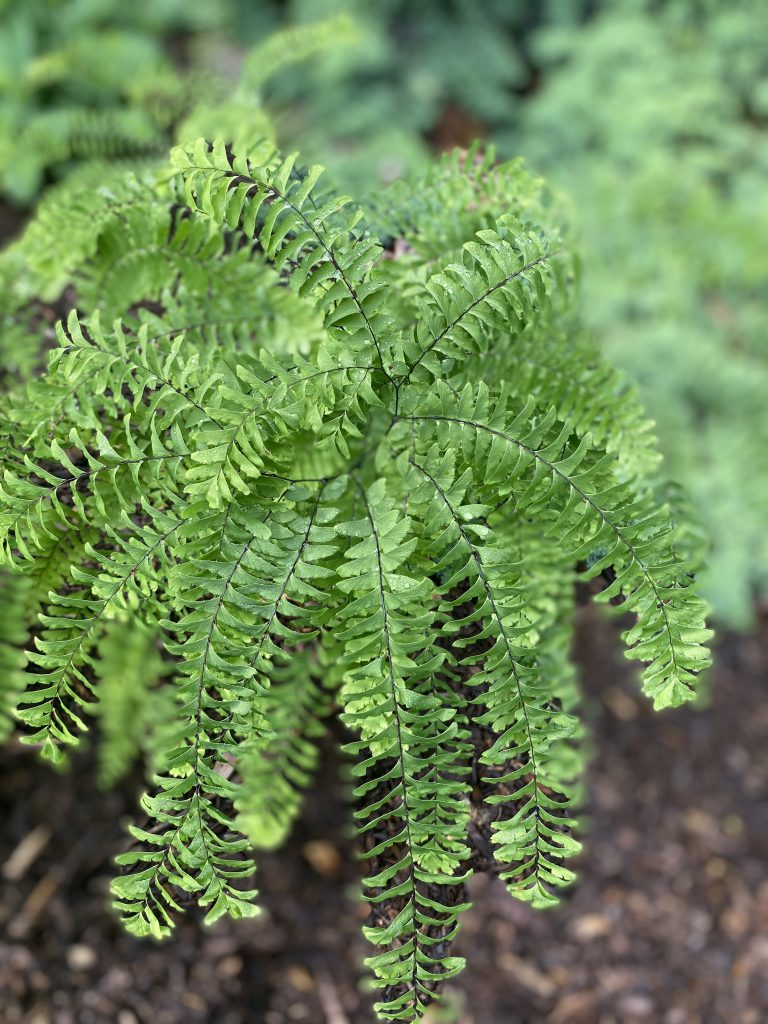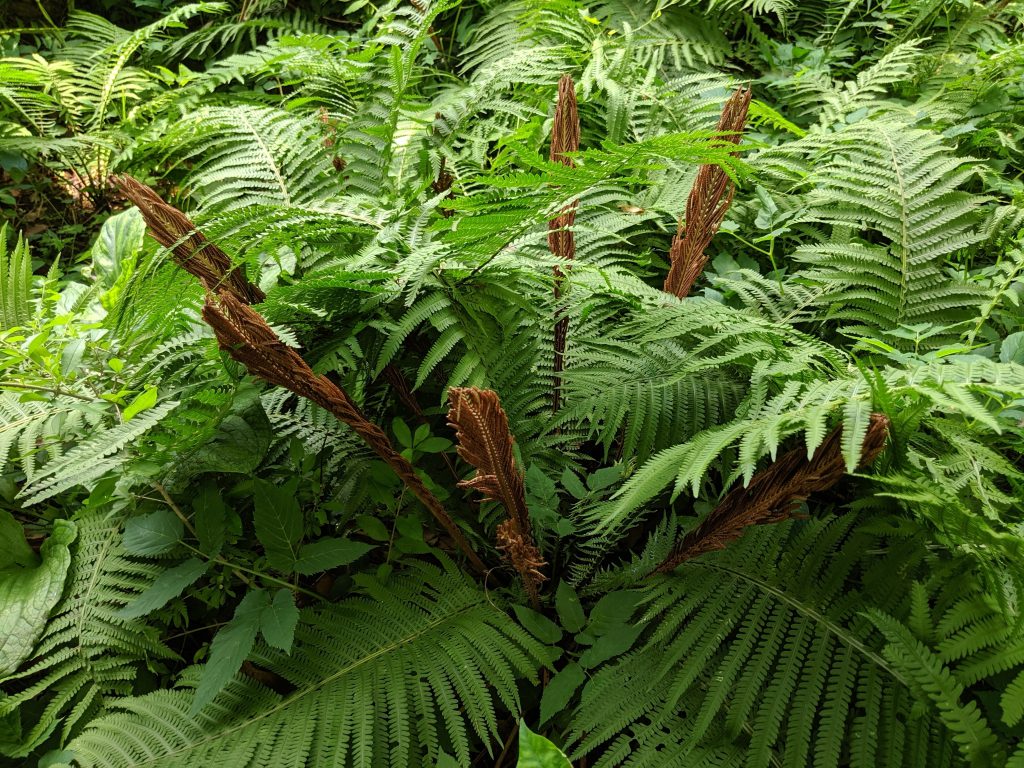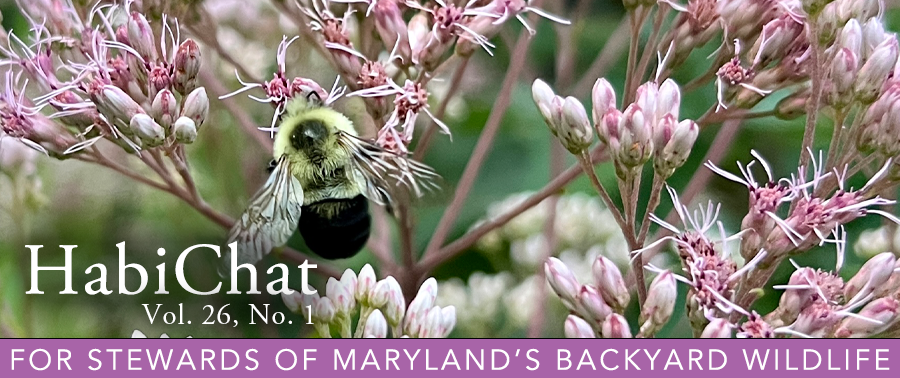Native Plant Profile: Yours Frondly, Ferns
Who needs flowers when you have fiddleheads? Ferns not only provide foraging space for ground-feeding birds, but they create vital shelter for numerous species of Maryland wildlife. Let’s explore a bit about why ferns are fascinating and look at some of the benefits of planting them in your home habitat.
First, a little history! 390 million years ago, during the Devonian Period, Planet Earth was a hot and humid world where ferns had the perfect conditions to become the dominant plant species. By comparison, flowering plants have “only” been around for about 130 million years. Ferns evolved from a now extinct group of plants called Rhyniopsids. The plants in Rhyniopsida didn’t have any leaves; instead, they photosynthesized with their stems and branches. As plants evolved, Rhynopsida gave way to ferns, which means they were some of the first plants with leaves.
This brings up an interesting question: if the ferns we see in modern times have been around for almost 400 million years, why is it that hardly anything eats them? One possible explanation is that animals used to eat certain ferns, and maybe that’s why those tastier ferns aren’t around today. Modern ferns can be poisonous; studies have shown that some ferns contain toxins like the carcinogenic ptaquiloside, while some produce another toxic enzyme, thiaminase. These toxins likely make the ferns less tasty for snacking than most of the surrounding forest foliage, even though it isn’t lethal to wildlife in small amounts. If you’re a gardener, you know this means lovely, long-lasting, un-chewed foliage for a lengthy growing season, with some ferns even boasting evergreen status.
Some of the native, deer-resistant ferns we encourage planting are below. Consider including ferns’ elegant fronds in your backyard habitat!
- Northern Maidenhair Fern (Adiantum pedatum)
- Christmas fern (Polystichum acrostichoides)
- Hay-Scented Fern (Dennstaedtia punctilobula)
- Lady Fern (Athyrium filix-femina)
- Royal Fern (Osmunda regalis)
- Wood Fern (Dryopteris marginalis)
Curious to know more about ferns? The Maryland Native Plant Society has even more suggestions for reading and resources, here. Plus, check out this great resource from the U.S. Forest Service, including fern structure and reproductive details, places to see them (besides Maryland’s Natural Areas), and kids coloring pages.
Welcome back to HabiChat!
My name is Sarah Witcher, and I’m new here! With the help of Edwin Guevara and Paula Becker, I’ll be taking over in the HabiChat and Wild Acres realm, hoping to continue to inspire (and be inspired by) Maryland nature enthusiasts. Feel free to reach out to us with any wildlife questions or topics you’d like to know more about, or share what you’ve done in the past year with your backyard habitat. We’d love to hear from you!
In this issue, we’ll consider how to approach the “littler” critters and appreciate mini-Maryland wildlife through the use of a macro lens. Also, habitat tips about end-of-summer bird baths and our favorite ferns will be featured, with a fun leaf print activity for artists of any age. Finally, enjoy a new section that will highlight the very best of what we here at the Natural Heritage Program do within the Maryland Department of Natural Resources.
We hope you’ll come visit us and meet our new staff at the Maryland State Fair.
Enjoy!
Sarah Witcher
Sarah.Witcher1@maryland.gov
410-260-8566
Click here to have HabiChat—the quarterly backyard wildlife habitat newsletter from the Wild Acres program—delivered right to your inbox!
In this Issue
- Macro Mini Maryland
- Chlorophyll Leaf Prints in 5 Easy Steps
- Habitat Tip: Helping Birds Beat The Heat
- Native Plant Profile: Yours Frondly, Ferns
- Natural Heritage Program Spotlight: Maryland’s Natural Areas




 1-888-373-7888
1-888-373-7888 233733
233733